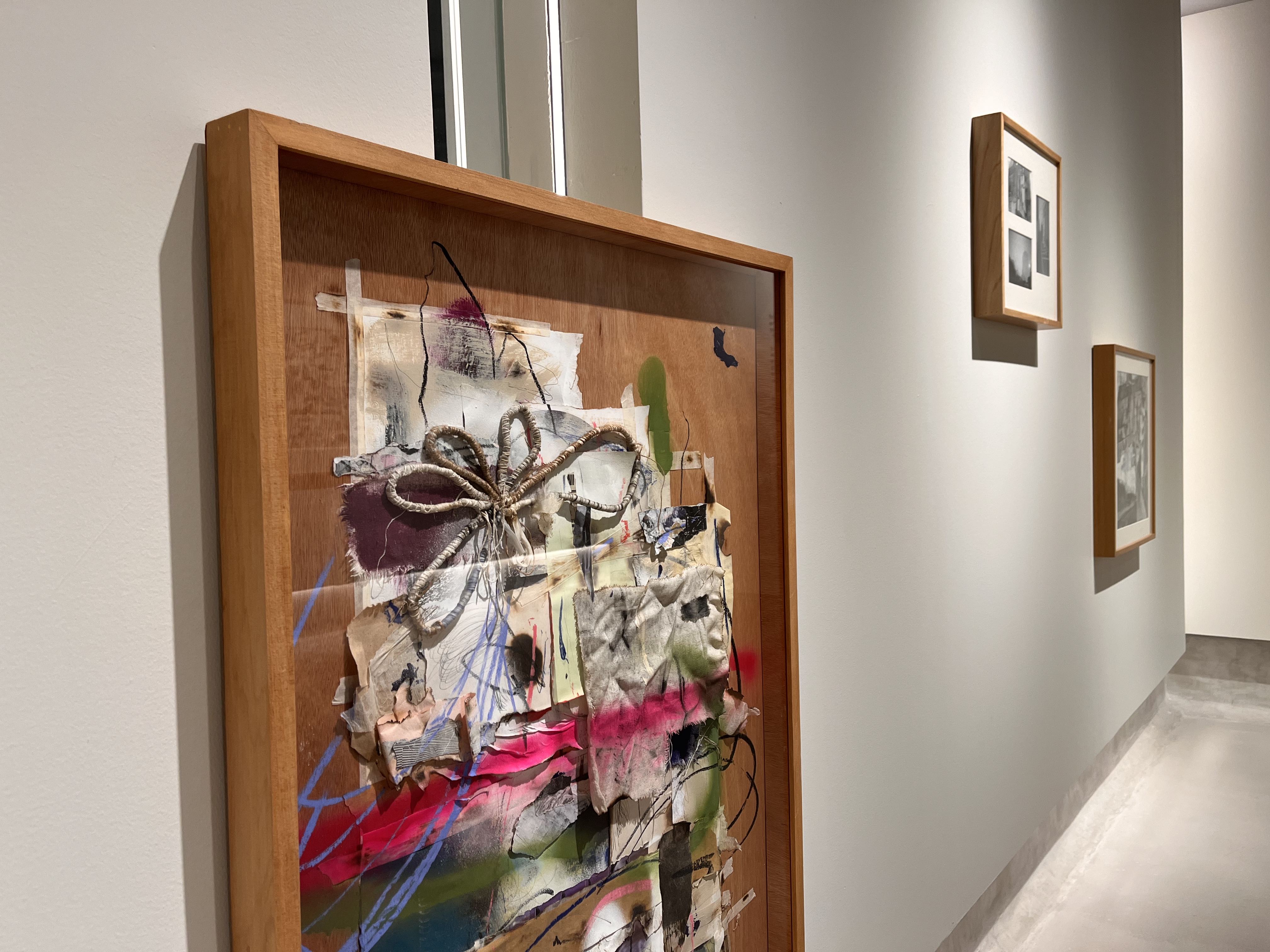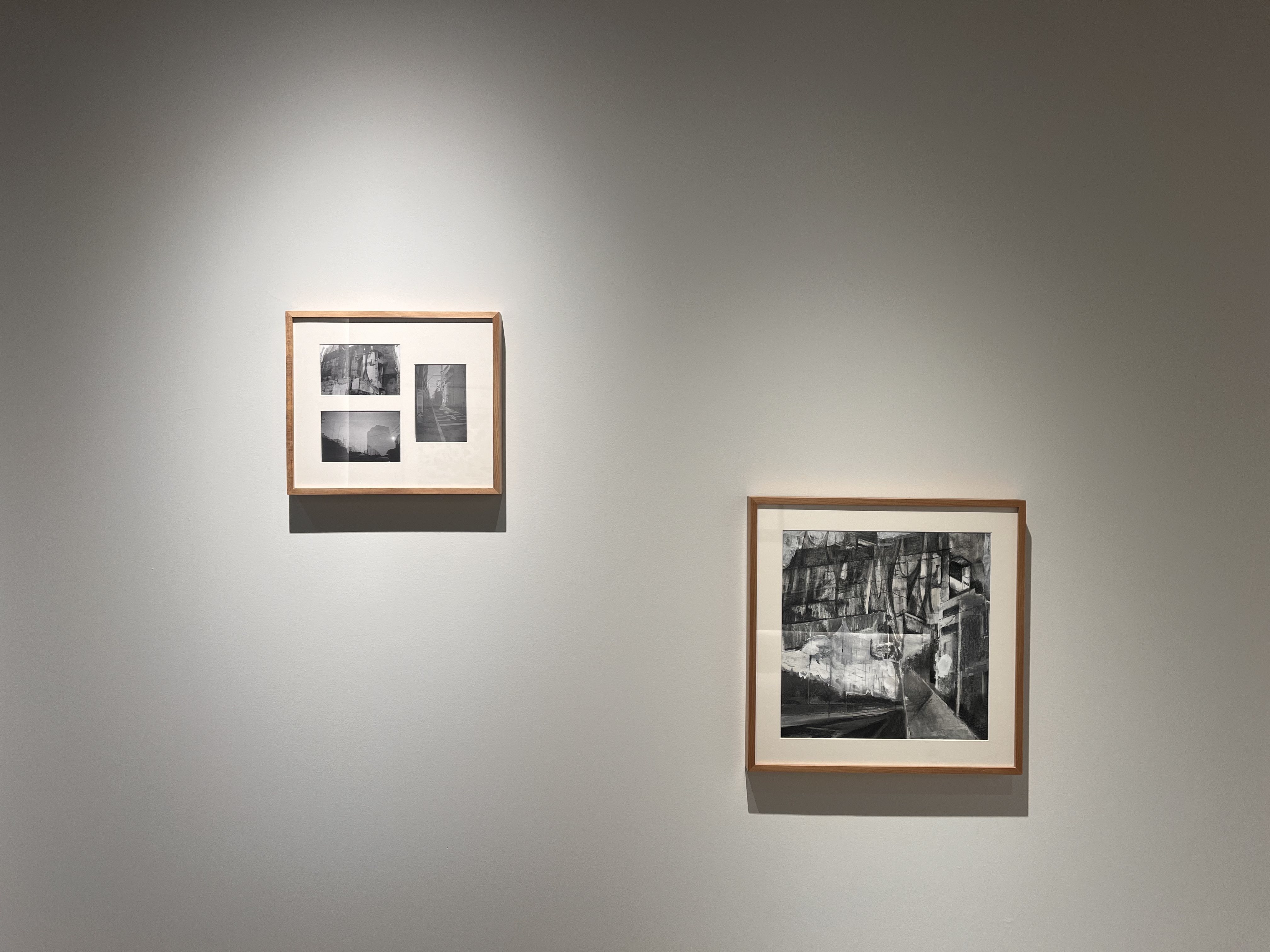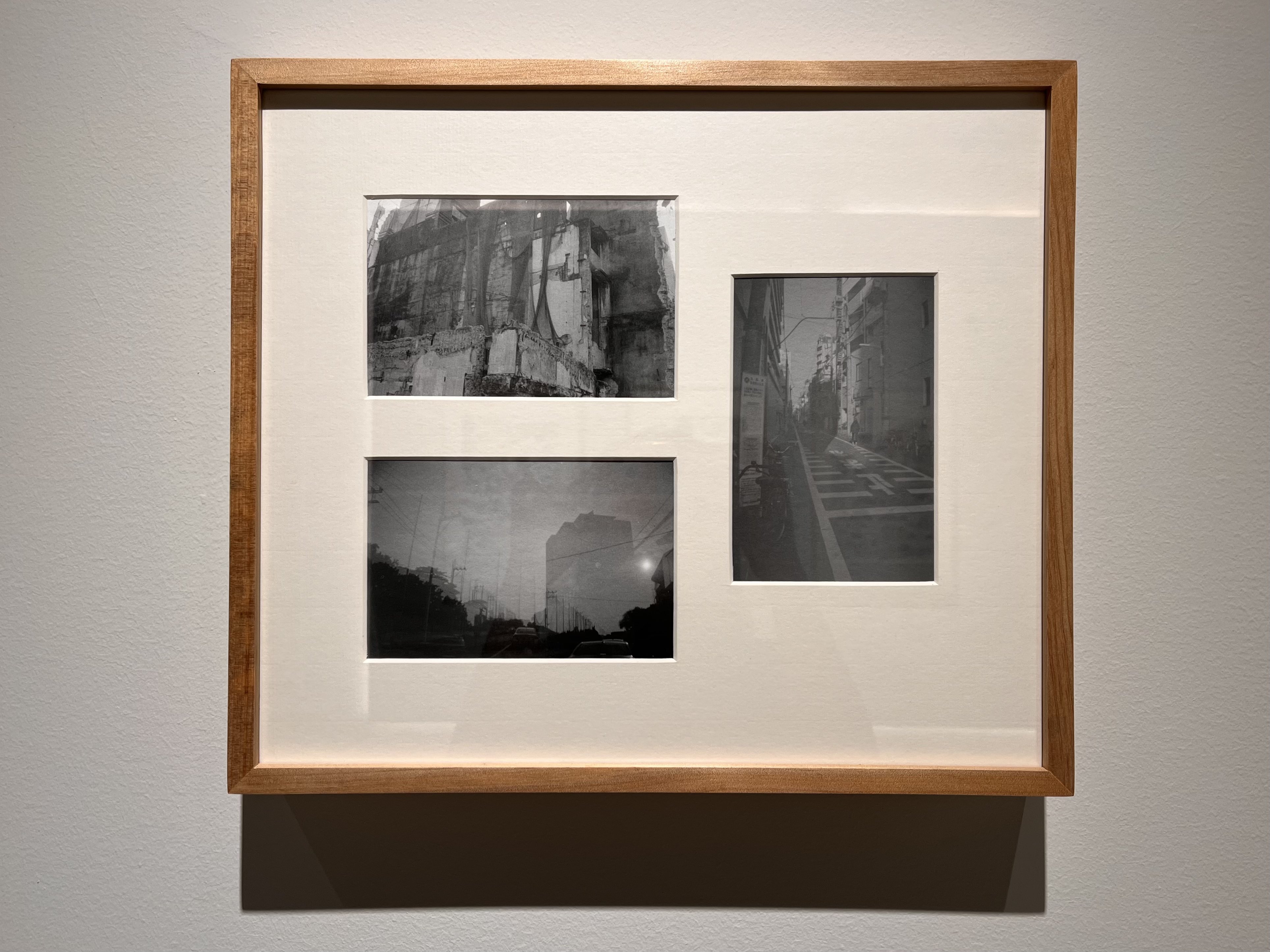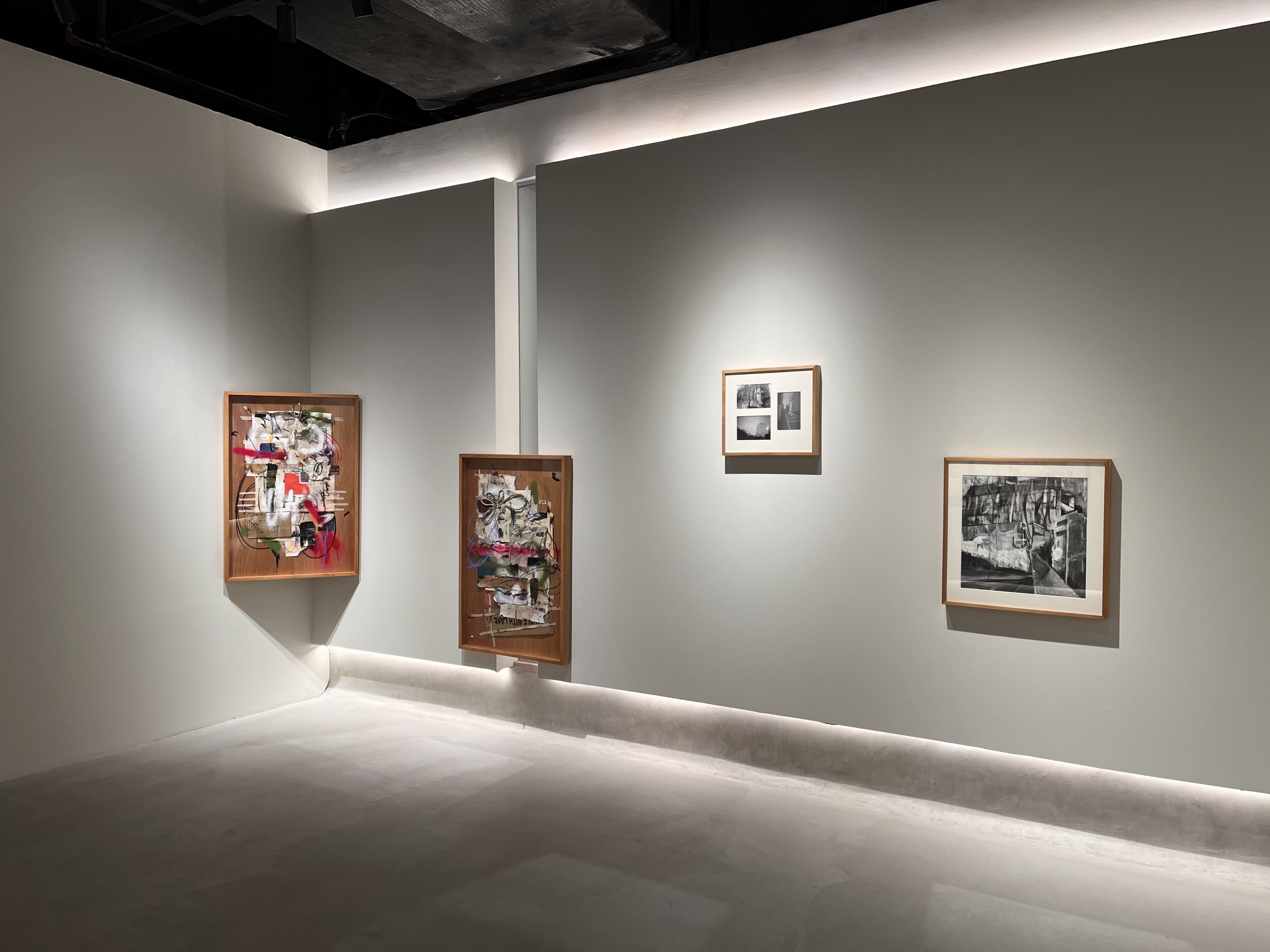Max Ernst referred to collage as a “coupling of two realities.” He called this coupling irrational, as it allowed irreconcilable elements to reconcile on a single visual plane. Techniques in art like collage, layering, and assemblage allow us to see the distinction between details while intuitively forming connections between them. Ultimately, this reflects the way we tie so much of our known realities to the material. The smallest disconnected scraps of text, fabric, or paint can conjure up personal and shared impressions among different viewers. Yet this also underscores another key aspect of these practices. They highlight the way reality, as we know it, can be as flimsy as a torn piece of paper.
Thought for the morrow brings together the works of three artists working within this realm of the irreconcilable. The show contemplates the idea of tomorrow—an irrational plane in itself as it sits so close to what we know while lying further from our grasp each day. When the present is steeped in all shades of turmoil—political, economic, personal, emotional—what certainties remain for tomorrow? What do we say to a future as tenuous as it is obscure? Is Jumalon, Pauline Reynolds, and Jel Suarez collate different realities, perspectives, and fragments of histories to navigate through the complexities of the present. They form images both seemingly incongruous and instinctively symbolic.
Jel Suarez’s collage practice may be described as historiography. With cutouts of painterly textures, drawings, and texts, her works appear to unravel imagined histories, tapping into the storytelling power of the archive. She uses painted and hand-drawn images to map out terrains lined with texts from book pages. Torn seams and amorphous forms trace pathways through her works, as detailed as pathways through historical landscape paintings. ‘The trees are in their place’ underscores the ambiguous nature of place in collage. Fragments of watercolor and ink allude to different places on their own, yet together seem to form a whole new place entirely. Place and belonging become fluid; new growths emerge wherever the seeds are planted.
For Pauline Reynolds, ‘thoughts’ are manifested in the unfiltered and often unseen. Her mixed media works gather different materials, from old fabrics to worn down cardboard. ‘Fragile Mind’ shows an old sign saying “Handle with care,” while the state of both the sign and the materials surrounding it at first glance show the opposite. Yet in Reynolds’s art, there is strength in fragility and a fragility in strength. She shows the discarded, the messy, and the neglected in a new light, allowing us to see the unspoken narratives that connect a hardened clump of paint and an old piece of tape. Reynolds allows these objects, weary with histories of their own, to fuse into new creations as multifaceted as they are wholly expressive.
Is Jumalon’s ‘Snakeskin I’ and ‘Snakeskin II’ diptych is less a collage of materials than a collage of perspectives. Taking photos of the environment around her, she joins them into one image, bringing together three different viewpoints, dimensions, and ways of observing one’s own surroundings. She sketches with the immediacy and intimacy of one trying to preserve and make sense of impressions. Time seems to both stand still and pass continuously. Jumalon’s work illustrates how often, the facets of our day across place and time can blend together, and the most ephemeral of moments can resound in retrospect.
Dualities weave their way through the exhibition. Difference and similarity. Harmony and conflict. Permanence and impermanence. To ponder on tomorrow, Suarez, Jumalon, and Reynolds find themselves musing upon today. How can we capture a collective shade of the contemporary through so many material and conceptual hues? Jumalon and Reynolds create their own unique images of the present, both shaped by their environments and by themselves individually. These constants of the now become anchors for the future, as our frequent city views and everyday clutter become simple ways to assure us that tomorrow is, indeed, still within our grasp. In the works of Suarez, evoking one’s notions of history and the past allows one to look forward.
A ‘thought for the morrow’ may seem like a dismissal. We abandon thoughts for today and leave them for tomorrow, unconsciously believing it will never come. They may also be a hopeful, if not wistful fancy to momentarily escape the confines of the present. In Thought for the morrow, the future is not completely distinct from the present. Both can exist to some degree as two coupled realities. Though perhaps not irrationally, as reflected in the works of these three artists. Fragments of the future can take form in the present and vice versa, shards of the present overlap with the future. As we navigate the uncertainty and fear of what comes next, we can find refuge knowing our thoughts for today will be with us tomorrow and in the days to come. Reality may be occasionally frail, but we push on.
Thought for the morrow runs from May 4 to 25, 2024 at Cartellino Gallery and Creative Space.
Mara Fabella is an artist, writer, athlete, and cat mom.








